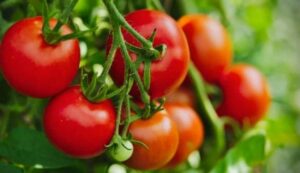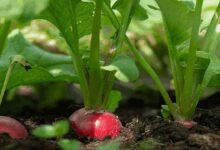Vegetable Farming: Adopt these 13 easy methods in farming, production of vegetables and crops will increase
Vegetable Farming: Due to its agricultural traditions and technological advancement, India, the world’s second-largest vegetable producer after China, continues to be a leader in vegetable production. But as production increases, farmers also face many difficulties, the main ones being disease and pest management. It is now important for farmers to understand how to properly grow and preserve vegetables in such a situation. Please suggest some important considerations that farmers should keep in mind while growing vegetables.

1. Picking vegetables at the right time
Vegetables should be picked at the right time depending on their intended purpose and distance from the market. Picking perishable vegetables when they are still a little raw can help keep them fresh for a longer period. Also, picking vegetables in the evening for local markets is beneficial, as it is safer to store and transport them at night.
2. Pumpkin Vegetables
Drains should be made in the field before planting pumpkin vegetables. As a result, less water and fertilizer are used for irrigation and weeding. In addition, they produce more fruits because they rot less on dry land.
3. Special care while growing tomatoes
Planting tomato plants on ridges can cause fruit rot. Frequent watering and avoiding too much nitrogen in the crop are two ways to prevent fruit rot.
4. Growing turnips, carrots and radishes
Planting turnips, beets, carrots and radishes on clay soil can cause their roots to crack. Earthing up should be done two or three times to keep the roots of these crops healthy.
5. Growing cabbage and cauliflower
It is very important to hill up cauliflower and cabbage crops. Taking this precaution increases production and prevents the plants from falling.
6. Production of sweet potatoes and potatoes
It is important to hill up potatoes and sweet potatoes. As a result, the tubers grow large and fully developed, and they do not have a green color, which reduces quality.
7. Irrigation of Leguminous Vegetables
The initial irrigation of leguminous vegetables should be done 15 to 20 days after the seeds germinate, as this ensures optimum growth of the crop.
8. Using irrigation while growing okra
To ensure optimum germination, okra seeds should be immersed in water for 12 to 24 hours before planting. When the plants start wilting due to lack of water, the first irrigation should be done.
9. Fertilizing Leafy Vegetables
Leafy vegetables should be given only nitrogen fertilizers. A mixture of ammonium and nitrogen is particularly beneficial as it promotes plant growth.
10. Planting in Summer
Summer planting should be done only in the evening. Remember to water as soon as possible after planting to give stability to the plant.
11. Pesticide Use
Tomatoes and brinjals can be treated with pesticides only after harvesting the infected fruits. To prevent the spread of pests, the infected fruits should be buried in the pit.
12. Harvesting after pesticide spraying
To prevent pesticide residues, it is advisable to harvest vegetables for use 8 to 10 days after spraying pesticides.
13. Disease and Pest Prevention
Expert guidance should be followed while working on the management of pests and diseases in vegetables. This helps in increasing the yield besides improving the quality of the produce.
Disease and Pest Management for Vegetables
In India, a variety of vegetable pests and diseases can have a negative impact on production. Three main categories can be used to group these diseases:
1. Bacterial Diseases
Vegetables are damaged by bacterial infections in different ways. Bacterial rot disease is one of the major bacterial diseases in brinjal, tomato, potato, cabbage, carrot and onion.
2. Diseases caused by fungi
Fungal diseases, including powdery mildew of peas and late blight of potatoes, are caused by fungal attacks.
3. Infectious diseases
Insects, which are carriers of viruses, are often the source of viral infections. Mealybugs in potatoes, tomatoes and peppers, as well as leaf curl of tomatoes and peppers, are examples.
Measures to prevent vegetable diseases and pests
- Before planting, treat seeds with bavistin, thiram or captan.
- Nursery maintenance: Avoid overcrowding in the nursery and use sandy loam soil.
- Weed control: Use chemical pesticides to eliminate weeds.
- By taking these steps, farmers can protect their crops and increase yields, which will also increase their profits.

